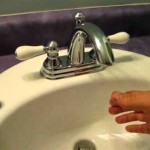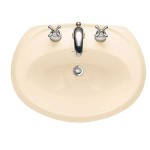How To Lay Tile On The Wall In A Bathroom: A Comprehensive Guide
Tiling a bathroom wall is a significant home improvement project that can dramatically enhance the aesthetic appeal and functionality of the space. While it requires careful planning, meticulous execution, and the right tools, the satisfaction of a professionally tiled bathroom is well worth the effort. This article provides a detailed, step-by-step guide on how to successfully lay tile on a bathroom wall.
Preparation: The Foundation of a Successful Tile Installation
Proper preparation is the most critical stage of any tiling project. Rushing this process can lead to uneven surfaces, poor adhesion, and costly repairs down the line. The preparation phase encompasses several key areas: assessing the existing wall, gathering necessary materials and tools, and planning the tile layout.
Assessing the Existing Wall: The first step is to thoroughly inspect the bathroom wall that will be tiled. The surface must be structurally sound, clean, and level. Check for any signs of water damage, mold, or loose paint. Water damage must be addressed before proceeding. Mold can be treated with appropriate cleaning solutions, and loose paint should be scraped away. Use a level to identify any significant unevenness. Minor imperfections can often be corrected during the tile-setting process with additional thin-set mortar. However, major discrepancies will necessitate more extensive repairs, such as applying a leveling compound or installing backer board.
Gathering Materials and Tools: Having all the necessary materials and tools readily available will streamline the tiling process and minimize interruptions. Essential materials include: tiles themselves (with an extra 10-15% allowance for cuts and breakage), thin-set mortar (choose one specifically formulated for bathroom environments due to humidity), grout, sealant, backer board (if needed), tile spacers, and a grout sponge. Essential tools include: a tile saw (wet saw is ideal for precise cuts), a notched trowel (the size of the notches depends on the size of the tiles), a level, a measuring tape, a pencil, a rubber mallet, a grout float, buckets for mixing mortar and cleaning, safety glasses, and gloves.
Planning the Tile Layout: Before applying any mortar, carefully plan the tile layout. This is crucial for achieving a visually appealing and balanced result. Start by finding the center point of the wall, both horizontally and vertically. Use a level to draw straight lines that intersect at this center point. These lines will serve as guides for laying the first row of tiles. Consider the placement of full tiles and cut tiles. Ideally, avoid having very small slivers of tile at the edges of the wall, as they can look awkward. Adjust the layout as needed to ensure a more aesthetically pleasing outcome. Pay attention to any existing fixtures, such as shower niches or window frames, and plan the tile cuts accordingly. It’s also important to dry-fit the tiles (placing them on the wall without mortar) to visualize the final result and identify any potential issues before committing to the installation.
When selecting tiles, consider the overall aesthetic of the bathroom, the size of the space, and the ease of maintenance. Smaller tiles can make a small bathroom appear larger, while larger tiles can create a more contemporary look. Choose tiles that are appropriate for wet environments and are slip-resistant, especially for shower floors. The color and pattern of the tiles can also significantly impact the overall ambiance of the bathroom.
Applying the Tile: The Art of Precise Placement
Once the preparation is complete, the next step is to apply the tiles to the wall. This involves mixing the thin-set mortar, applying it to the wall with a notched trowel, and carefully placing the tiles according to the planned layout. This stage requires patience, precision, and attention to detail.
Mixing the Thin-Set Mortar: Follow the manufacturer's instructions carefully when mixing the thin-set mortar. Typically, this involves adding water to the dry mortar powder in a clean bucket and mixing thoroughly with a drill and mixing attachment. The consistency of the mortar should be similar to that of peanut butter – smooth and spreadable, but not too runny. Avoid mixing too much mortar at once, as it will begin to dry out and become difficult to work with. It's better to mix smaller batches more frequently.
Applying the Mortar to the Wall: Using the notched trowel, apply the thin-set mortar to a small section of the wall (approximately 2-3 square feet) at a time. Hold the trowel at a 45-degree angle and spread the mortar evenly, creating ridges. The depth of the notches on the trowel determines the thickness of the mortar bed, which is crucial for proper tile adhesion. Consult the tile manufacturer's recommendations for the appropriate notch size. Avoid applying mortar to a larger area than you can comfortably tile within 15-20 minutes, as the mortar will begin to dry out. Remove any excess mortar from the edges of the area to ensure a clean finish.
Placing the Tiles: Carefully place the tiles onto the mortar bed, following the layout that was planned earlier. Use tile spacers to maintain consistent grout lines. Press each tile firmly into the mortar, using a slight twisting motion to ensure good contact. Use a level to check that the tiles are aligned correctly. If necessary, gently tap the tiles with a rubber mallet to adjust their position or to ensure they are flush with adjacent tiles. Periodically check the overall level of the tiled area to identify and correct any inconsistencies.
Cutting Tiles: Cutting tiles is often necessary to fit them around corners, fixtures, or at the edges of the wall. Use a tile saw (preferably a wet saw) for accurate and clean cuts. A wet saw uses water to cool the blade and reduce dust. Measure the required cut carefully and mark the tile with a pencil. When using a wet saw, guide the tile slowly and steadily through the blade. For smaller cuts or intricate shapes, a tile nipper can be used. Always wear safety glasses when cutting tiles to protect your eyes from flying debris.
When installing tiles around plumbing fixtures, such as showerheads or faucets, use a hole saw to create precisely sized holes. Measure the diameter of the pipe and select a hole saw that is slightly larger. Drill the hole slowly and carefully to avoid chipping or cracking the tile.
Grouting and Sealing: Completing the Transformation
Once the thin-set mortar has cured completely (typically after 24-48 hours), the next step is to grout the tiles. Grouting fills the spaces between the tiles, providing a waterproof seal and enhancing the overall appearance of the tiled surface. After grouting, sealing the grout lines helps to prevent staining and mildew growth.
Applying the Grout: Remove the tile spacers and clean any excess mortar from the grout lines. Mix the grout according to the manufacturer's instructions, ensuring a smooth and consistent consistency. Using a grout float, apply the grout to the tile surface at a 45-degree angle, forcing it into the grout lines. Work in small sections, ensuring that all the grout lines are completely filled. Remove any excess grout from the tile surface with the grout float, again holding it at a 45-degree angle.
Cleaning the Grout Haze: After allowing the grout to set for the recommended time (usually 15-30 minutes), use a damp grout sponge to clean the excess grout haze from the tile surface. Rinse the sponge frequently in clean water. Be careful not to remove too much grout from the grout lines. It may be necessary to repeat this process several times to completely remove the grout haze. Allow the grout to cure completely (typically 24-72 hours) before applying sealant.
Sealing the Grout Lines: Sealing the grout lines is an important step in protecting the grout from staining, mildew growth, and water damage. Apply a grout sealant to the grout lines using a small brush or applicator. Follow the manufacturer's instructions for application and drying time. Wipe away any excess sealant from the tile surface with a clean cloth. Reapply sealant periodically as needed to maintain its effectiveness.
Caulking: Apply caulk where the tile meets other surfaces, such as the bathtub, shower pan, or countertop. Choose a caulk that is specifically designed for bathroom environments and is mildew-resistant. Apply the caulk in a smooth, even bead and smooth it with a caulk smoothing tool or your finger. Clean up any excess caulk with a damp cloth.
After the entire process is complete, allow the tiled area to dry completely before using the shower or bathtub. Regular cleaning and maintenance will help to keep the tiles looking their best for years to come. Use a mild soap and water solution to clean the tiles and grout. Avoid using harsh chemicals or abrasive cleaners, as they can damage the tile surface and grout. Inspect the grout lines regularly for any signs of cracks or damage and repair them promptly to prevent water damage.

How To Install Wall Tile In Bathroom

How To Install Wall Tile In Bathroom Howtospecialist Build Step By Diy Plans

The Complete Guide To Installing Tile On Shower Or Bathtub Walls

How To Install Bathroom Wall Tile The Rta

How To Lay Bathroom Tile 5 Easy Steps Rubi Blog Usa

How To Tile A Bathroom Shower Walls Floor Materials 100 Pics Pro Tips

How To Install A Ceramic Tile Wall

How To Install A Shower Tile Wall Bathroom

Part 1 How To Install Tile On Shower Tub Wall Step By

How To Install Tile In A Bathroom Shower
Related Posts







